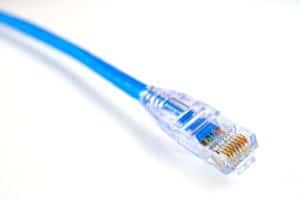
Electrostatic discharge (ESd) materials are plastics designed to reduce static electricity in order to protect electrostatic-sensitive devices or contain flammable liquids or gases. These plastics come in varying degrees, two of which are antistatic and static dissipative. Understanding antistatic vs. static dissipative plastics will help you choose the right material for your application.
A build-up of static electricity can occur when there is sliding, rubbing, or separating of a material. When this happens to an insulating material, like plastic, the charge tends to remain in the localized area of contact between the materials. This electrostatic voltage can then be discharged via an arc or spark when the material comes in contact with a body at a sufficiently different electrical potential – such as a person or microcircuit.
Known as electrostatic discharge (ESd), this sudden flow of electricity between two electrically charged objects can have catastrophic effects. If ESd occurs to a person, they may experience anything from a mild to a painful shock, or, in extreme cases, loss of life. An electrical spark is especially dangerous in environments that contain flammable liquids, solids or gasses, such as a hospital operating room. But the most common casualties of ESd are sensitive electronic components. Some micro-electronic parts can be destroyed or damaged by ESd as low as 20 volts. The consequences of ESd damage to an electrical component range from faulty readings to permanent damage, all of which result in equipment downtime and costly repairs. Antistatic and static dissipative plastics are used to minimize the risk of ESd and reduce breakdowns.
Conductive thermoplastics are categorized based on their surface resistance, which measures how easily an electric charge can travel across a substance. Static dissipative plastics have a surface resistance of >1 x 105 ohms/square <1 x 1012 ohms/square and allow electrical charges to dissipate generally within milliseconds. Static dissipative materials allow the charges to flow to ground more slowly and in a more controlled manner, preventing discharge to or from human contact.
Anti-static materials have a surface resistivity of 1010 to 1012 ohms/cm and inhibit triboelectric charging (the build-up of an electric charge by rubbing one material with another material). Anti-static plastics suppress initial charges, prevent the build-up of static electricity, and provide a very slow rate of decay of static charge from a hundredth of to several seconds.
Custom anti-static and static dissipative parts help reduce the risk of ESd without compromising the strength, heat and chemical resistance, and wear properties that your high-end parts require. At Reading Plastic, we’ve produced ESd parts integral for clients in the storage and packaging, medical devices, electronics, automotive, computer and appliance industries. Some of our most commonly requested anti-static and static dissipative plastics include:
*Note: Due to the high-end nature of these materials, some may have lead times and manufacturer’s minimums.
If you have a project that requires high-end machining, tight tolerances, and specialty plastics, contact Reading Plastic today at (610)-926-3245 or email site2@readingplastic.com. With four decades of experience in specialty plastic machining we can help you choose the plastic that is right for your project and help you avoid costly ESd damage.